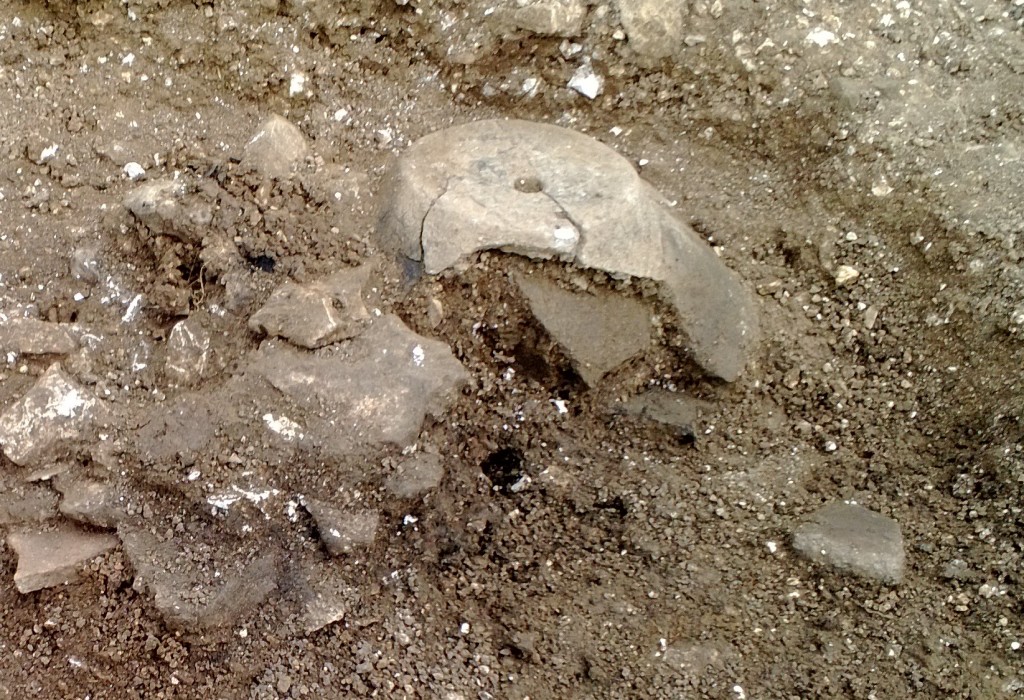Friday 14th June 2013
Day 13- Roman ‘Grand Designs’
Agricultural ploughing can often affect the extent of the archaeology still recoverable on site. This means that features that can define use of space are often lost over time. Therefore whenever features are recovered that can help define use of space and divisions within a settlement are recovered, they are a very special find! Today, within a rectangular house platform; a hearth was excavated with burnt material circling it and this will be very useful for reconstruction of space!

Recovered hearth (circled in red), within a settlement structure, courtesy of Bournemouth University.
Another house platform beside this feature above also revealed evidence indicative of the house purpose and structure! One of the sections revealed a rectangular structure constructed with flint. The section beside this had a large rubble spread of flint within it and it is thought that this represented the waste flint from the destruction of the rectangular structure. This provides very interesting evidence for the construction and destruction of this particular settlement structure!
The Roman Villa area has had various trenches being excavated in order to see the construction phases of the buildings and for further evidence for features pre-dating the Banjo Enclosure. Today initial excavation of two features revealed two cremation pots. The first pot revealed is lying in-situ until the entire area can be lifted for more careful excavation to be undertaken in a laboratory. The second cremation pot was in a more fragmented state and had various burnt bones around the pottery, which was later identified to be sheep! This evidence is very interesting for how the animals were treated at the site and can be indicative evidence for any ritualistic practices.
